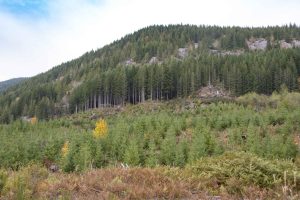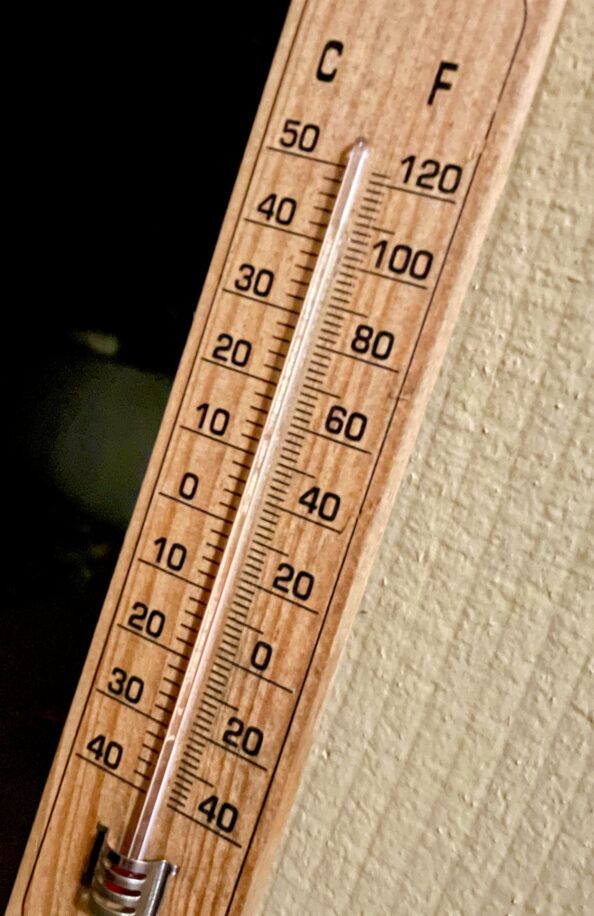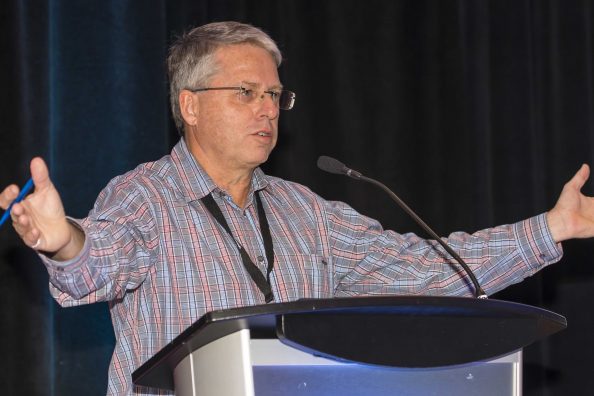Canada’s managed forest is one of the largest living reservoirs of carbon on the planet. For centuries it slowly filled, as billions of growing trees pulled CO2 from the air and stored it away in their wood. This ancient, continent-spanning, “carbon sink” helped keep the climate calm and cool. But in the last couple of decades, the flow of CO2 has completely reversed. Chainsaws and fossil fuel pollution are cranking open the floodgates that hold back this enormous reservoir of forest carbon. What started as a trickle a couple of decades ago has turned into a flood. Billions of tonnes of CO2 that were locked away in the forest have already drained back out on the backs of logging trucks and in the swirling smoke of ever more monstrous wildfires. This outpouring of forest carbon back into the atmosphere now dwarfs the fossil fuel emissions of most nations.
 Eastwood Forests has deployed slightly more than half of its debut fund through deals that have included acquisitions in Costa Rica, Panama and Canada. North Carolina-headquartered Eastwood announced its acquisition of 14,500 ha of northern Vancouver Island timberland from Western Forest Products for $69.2 million in February. …Eastwood VP for transactions Prab Dahal said “Western has done a good job in managing the forests but our philosophies are slightly different in that we probably would not have as much openings and as much clear-cuts as Western did in the past,” said Dahal. …“It has more versatility than the typical natural forest that we look for elsewhere,” said Dahal. “We can manage this purely for carbon and still do good, or manage purely as a plantation and continuously manage with a harvesting level that is sustainable and can do good, financially, for our investors.” …Eastwood was established in 2022.
Eastwood Forests has deployed slightly more than half of its debut fund through deals that have included acquisitions in Costa Rica, Panama and Canada. North Carolina-headquartered Eastwood announced its acquisition of 14,500 ha of northern Vancouver Island timberland from Western Forest Products for $69.2 million in February. …Eastwood VP for transactions Prab Dahal said “Western has done a good job in managing the forests but our philosophies are slightly different in that we probably would not have as much openings and as much clear-cuts as Western did in the past,” said Dahal. …“It has more versatility than the typical natural forest that we look for elsewhere,” said Dahal. “We can manage this purely for carbon and still do good, or manage purely as a plantation and continuously manage with a harvesting level that is sustainable and can do good, financially, for our investors.” …Eastwood was established in 2022. 
 …sustainable aviation fuel (SAF) is considered the most practical option for decarbonizing air travel, which in Canada accounts for about four per cent of Canada’s total greenhouse gas emissions. Biofuels made from … wood waste can lower fossil fuels’ carbon intensity and … require no major modifications to airplanes. B.C. has all of the conditions and resources needed to develop a sustainable aviation fuel industry, according to a panel discussion on SAF by the Greater Vancouver Board of Trade. But right now, most of the SAF that airlines are buying comes from suppliers in the U.S. and Europe. Despite the efforts of companies like Parkland Corp., a sustainable aviation fuel production industry is having a hard time getting off the ground in Canada. It all comes down to costs, and the Americans can produce SAF at a more cost competitive price than Canadian producers can, thanks in no small part to subsidies in the U.S.
…sustainable aviation fuel (SAF) is considered the most practical option for decarbonizing air travel, which in Canada accounts for about four per cent of Canada’s total greenhouse gas emissions. Biofuels made from … wood waste can lower fossil fuels’ carbon intensity and … require no major modifications to airplanes. B.C. has all of the conditions and resources needed to develop a sustainable aviation fuel industry, according to a panel discussion on SAF by the Greater Vancouver Board of Trade. But right now, most of the SAF that airlines are buying comes from suppliers in the U.S. and Europe. Despite the efforts of companies like Parkland Corp., a sustainable aviation fuel production industry is having a hard time getting off the ground in Canada. It all comes down to costs, and the Americans can produce SAF at a more cost competitive price than Canadian producers can, thanks in no small part to subsidies in the U.S. WASHINGTON — The Supreme Court on Monday rejected a lawsuit from Republican attorneys general in 19 states aimed at blocking climate change suits against the oil and gas industry from Democratic-led states. The justices acted on an unusual Republican effort to file suit in the Supreme Court over the Democratic states’ use of their own state courts to sue fossil fuel companies for deceiving the public about the risks of their products contributing to climate change. The Supreme Court typically hears only appeals, but the Constitution gives the court authority to hear original lawsuits states file against each other. Justices Clarence Thomas and Samuel Alito said they would have allowed the lawsuit to proceed for now. The justices don’t have the discretion to reject the complaint at this stage, Thomas wrote in a dissent that did not deal with the merits of the claim.
WASHINGTON — The Supreme Court on Monday rejected a lawsuit from Republican attorneys general in 19 states aimed at blocking climate change suits against the oil and gas industry from Democratic-led states. The justices acted on an unusual Republican effort to file suit in the Supreme Court over the Democratic states’ use of their own state courts to sue fossil fuel companies for deceiving the public about the risks of their products contributing to climate change. The Supreme Court typically hears only appeals, but the Constitution gives the court authority to hear original lawsuits states file against each other. Justices Clarence Thomas and Samuel Alito said they would have allowed the lawsuit to proceed for now. The justices don’t have the discretion to reject the complaint at this stage, Thomas wrote in a dissent that did not deal with the merits of the claim. Sweden might fail to meet its and the EU’s carbon neutrality targets after recent environmental policy shifts, the Organisation for Economic Cooperation and Development (OECD) warned in a report published Wednesday. Long considered a champion in environmental protection and the fight against climate change, the Scandinavian country has set a goal of net zero emissions by 2045, five years ahead of the European Union’s target. But Sweden might not be able meet either of those goals, according to a review conducted by the OECD, a 38-member group of mostly developed nations. “Over the last decade, the country has cut its greenhouse gas emissions faster than the EU average,” the report said. “However, recent policy shifts, particularly in the transport sector, have put into question Sweden’s ability to meet EU and domestic climate targets.” …In January, the World Wildlife Fund (WWF) criticised Sweden for not adequately protecting primary and old-growth forests from logging.
Sweden might fail to meet its and the EU’s carbon neutrality targets after recent environmental policy shifts, the Organisation for Economic Cooperation and Development (OECD) warned in a report published Wednesday. Long considered a champion in environmental protection and the fight against climate change, the Scandinavian country has set a goal of net zero emissions by 2045, five years ahead of the European Union’s target. But Sweden might not be able meet either of those goals, according to a review conducted by the OECD, a 38-member group of mostly developed nations. “Over the last decade, the country has cut its greenhouse gas emissions faster than the EU average,” the report said. “However, recent policy shifts, particularly in the transport sector, have put into question Sweden’s ability to meet EU and domestic climate targets.” …In January, the World Wildlife Fund (WWF) criticised Sweden for not adequately protecting primary and old-growth forests from logging. Denmark has long been praised for its transition to renewable energy, with renewable energy use rising from 6% in 1990 to 42.8% in 2022. However, behind this achievement lies an overdependence on woody biomass, which now accounts for up to 68% of its total renewable energy use. This growth has been sustained through direct and indirect subsidies, often exceeding those allocated to wind and solar energy. Denmark’s dependence on woody biomass is largely fuelled by imports from Estonia and Latvia. The country ranks among the largest, if not the largest, importer of woody biomass from the Baltic region, with 52% of its wood chips and pellets coming from these two nations. …Intensive logging is also devastating Estonian and Latvian bird populations.
Denmark has long been praised for its transition to renewable energy, with renewable energy use rising from 6% in 1990 to 42.8% in 2022. However, behind this achievement lies an overdependence on woody biomass, which now accounts for up to 68% of its total renewable energy use. This growth has been sustained through direct and indirect subsidies, often exceeding those allocated to wind and solar energy. Denmark’s dependence on woody biomass is largely fuelled by imports from Estonia and Latvia. The country ranks among the largest, if not the largest, importer of woody biomass from the Baltic region, with 52% of its wood chips and pellets coming from these two nations. …Intensive logging is also devastating Estonian and Latvian bird populations.  LONDON, March 12 – British energy regulator Ofgem said on Wednesday that it had not found evidence of a breach of sustainability obligations by power company Drax, in the watchdog’s review of reports prepared by auditor KPMG. Renewable power generators in Britain can receive renewable obligation (RO) certificates which can then be sold to energy suppliers who use them to sell renewable electricity products to customers. For biomass power plants to qualify for the certificates they must show at least 70% of their biomass fuel comes from sustainable sources. Green groups have long criticised the sustainability credentials of biomass power plants, which burn wood pellets to generate electricity. In 2023, regulator Ofgem opened an investigation into whether Drax was in breach of annual reporting requirements under the RO scheme. Ofgem said it reviewed over 3,000 documents and did not find evidence to support claims that sustainability obligations had been breached.
LONDON, March 12 – British energy regulator Ofgem said on Wednesday that it had not found evidence of a breach of sustainability obligations by power company Drax, in the watchdog’s review of reports prepared by auditor KPMG. Renewable power generators in Britain can receive renewable obligation (RO) certificates which can then be sold to energy suppliers who use them to sell renewable electricity products to customers. For biomass power plants to qualify for the certificates they must show at least 70% of their biomass fuel comes from sustainable sources. Green groups have long criticised the sustainability credentials of biomass power plants, which burn wood pellets to generate electricity. In 2023, regulator Ofgem opened an investigation into whether Drax was in breach of annual reporting requirements under the RO scheme. Ofgem said it reviewed over 3,000 documents and did not find evidence to support claims that sustainability obligations had been breached. The harvesting and burning of forest biomass to produce energy continues to surge, according to a new report entitled
The harvesting and burning of forest biomass to produce energy continues to surge, according to a new report entitled 